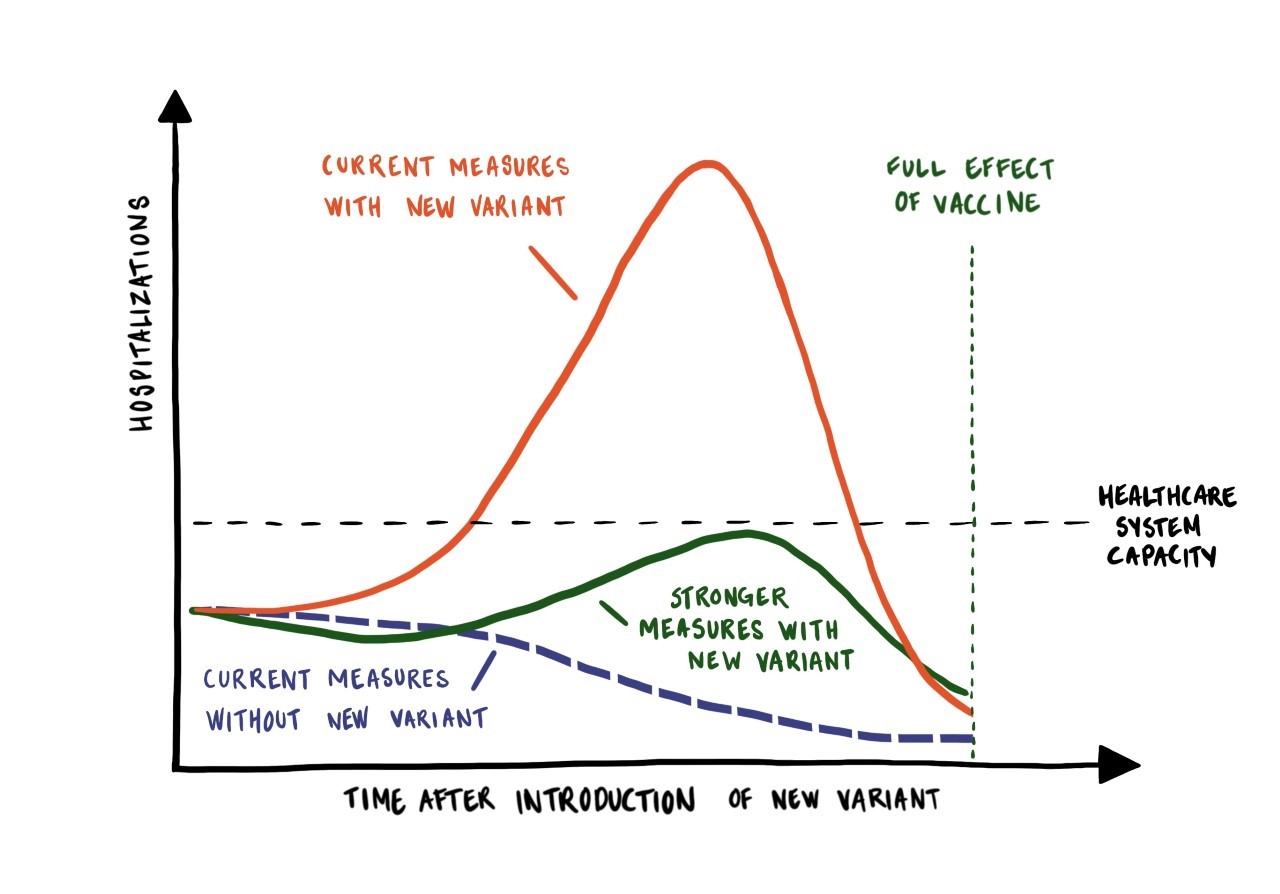COVID-19: New study shows how to motivate citizens with hope
New research provides public health authorities across the globe with a validated visual aid for health communication. The aid is a hope-inducing graph that has been proven to increase engagement in protective behaviour among citizens. With this aid, societies may be able to buy time in the current race between vaccines and the spread of more infectious variants, researchers argue.

While vaccines against coronavirus are implemented across the globe, the emergence of new and highly infectious variants of the disease threaten the capacity of healthcare systems. Strong measures are necessary, but how can governments and health authorities communicate effectively to motivate citizens?
Danish researchers have investigated this question using an experiment involving over 3,000 individuals.
The answer is that authorities can motivate citizens to engage in protective behaviour – and buy time until vaccines take effect – by inducing hope in the population.
“Our experiment clearly demonstrates that it makes a difference to communicate hope. Not just fear. It is crucial for health authorities to explain that there is a way through the dangers of the current situation. This motivates fatigued publics and increases their understanding of why strong measures are necessary," says Michael Bang Petersen, professor of political science at Aarhus BSS, Aarhus University.
’Buying time’ instead of ’flattening the curve’
The researchers based their study on the visualisation of red and green curves shared all over the world last spring, illustrating the need to flatten the epidemic curve in order to avoid a collapse of healthcare systems.
“We no longer need to ‘flatten the curve’, delaying the infection of exposed groups and allowing the healthcare systems to keep up. We now have to ‘buy time’ so that exposed groups are vaccinated in time and never infected in the first place,” says Michael Bang Petersen.
To help people understand the hope represented by the vaccines and motivate people to carry on, the researchers adapted the 'flattening the curve' graph to the current situation, where vaccine roll-out compete against new variants of coronavirus.
“With the new variants, stronger measures are needed to flatten the curve. Fatigued populations have a hard time coping with this development, but the good news is that there is an end to it. When vaccines take full effect, we will no longer need severe restrictions. We need to communicate this clearly,” says Michael Bang Petersen.
In an experiment, one group of participants was exposed to the graph communicating hope. Another group was exposed to a graph leaving out the effects of vaccines, only depicting a growing number of hospitalisations. And the result was clear. The hope-inducing graph helped people better understand why they need to adhere more strongly to the authorities’ guidelines, and why strong measures are required.
“Our experiment indicates that health authorities should not just communicate how the epidemic curves skyrocket as a consequence of new variants. Fear alone is not useful. People need to have hope too,” says Michael Bang Petersen.
Surveys in eight Western democracies
The researchers find that there is an urgent need for effective public health communication. They have conducted surveys in eight Western democracies, which have already seen a surge of new and highly infectious variants within their borders: The US, the UK, Sweden, France, Italy, Hungary, Germany and Denmark. 83 per cent of all respondents have heard about the new variants, but only 58 per cent report to adhere more strongly to health advice as a consequence.
“This clearly highlights the need to rethink current public communication. With this new study, we provide authorities with a new and freshly designed visual aid, which has been scientifically validated, and which they can use in their communication strategy. In truth, we can all use the aid and share it between us in these difficult times,” says Michael Bang Petersen, who also advises the Danish government on handling the corona crisis.
The urgency of these findings
The study has not yet been published in a scientific journal or been subjected to peer review, an academic process of approval which it usually takes months to complete.
“Nevertheless, we choose to publish these findings now, as the need is urgent. Right now, health authorities across the globe are figuring out how they can communicate effectively to their citizens in order to buy time,” says Michael Bang Petersen, who is widely quoted in recognised international journals, e.g. in relation to other studies on the corona crisis.
He has conducted the experiment together with:
- Lasse Engbo Christensen and Sune Lehmann, Technical University of Denmark
- Rebecca Adler-Nissen, University of Copenhagen
- Alexander Bor, Marie Fly Lindholt, Frederik Jørgensen and Andreas Roepstorff, Aarhus University
Behind the study
The experiment is a part of the comprehensive research project called ’How Democracies Cope with COVID19: A Data-Driven Approach’.
Since March 2020, the project has studied the attitudes and behaviour among citizens as well as governments closely. The aim is to uncover how democracies handle the corona crisis while it unfolds. The project is financed by the Carlsberg Foundation and headed by Michael Bang Petersen.
Read the scientific article in its full length here: "Communicate Hope to Motivate Action Against Infectious Variants"